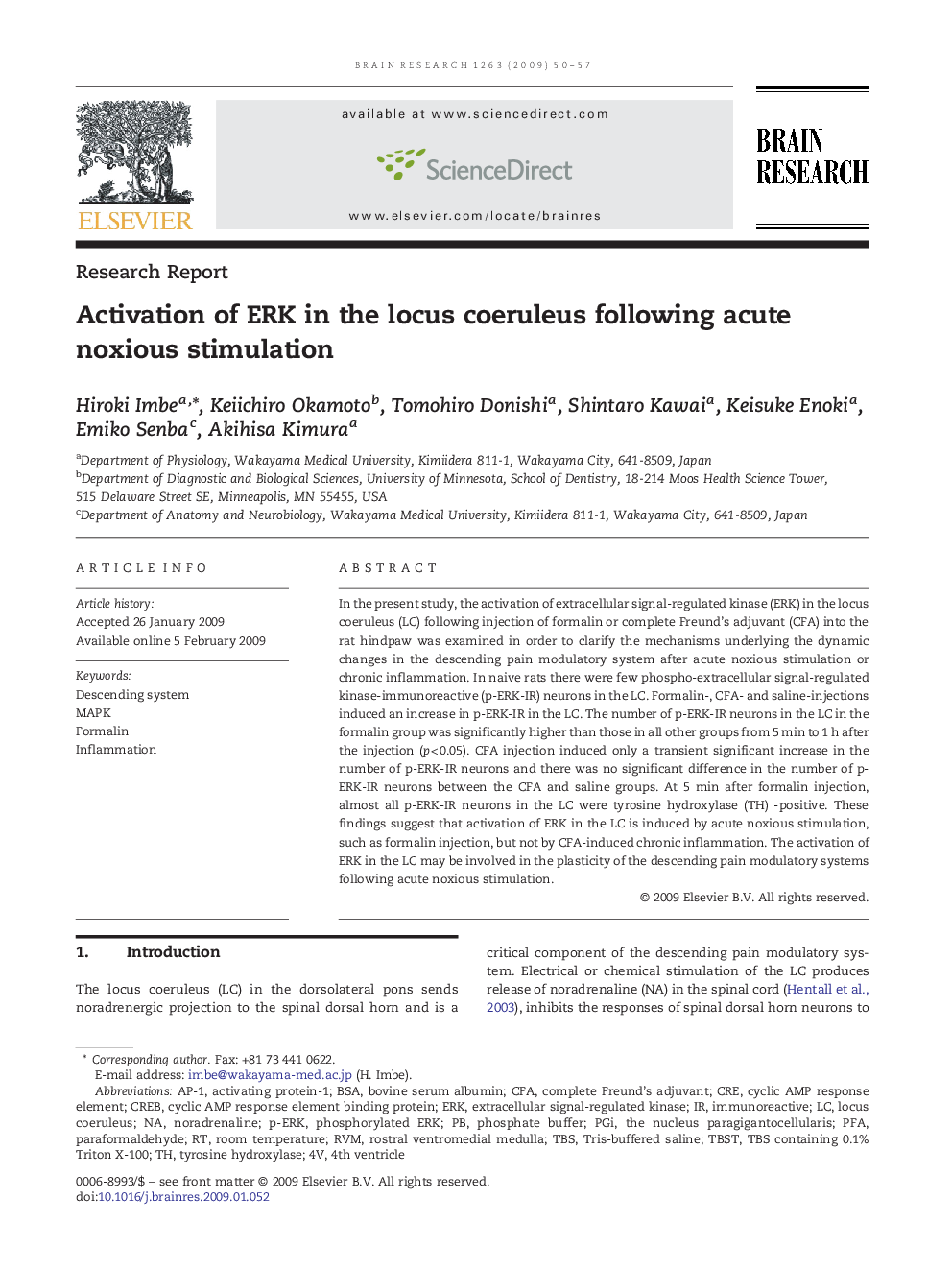| Article ID | Journal | Published Year | Pages | File Type |
|---|---|---|---|---|
| 4328394 | Brain Research | 2009 | 8 Pages |
In the present study, the activation of extracellular signal-regulated kinase (ERK) in the locus coeruleus (LC) following injection of formalin or complete Freund's adjuvant (CFA) into the rat hindpaw was examined in order to clarify the mechanisms underlying the dynamic changes in the descending pain modulatory system after acute noxious stimulation or chronic inflammation. In naive rats there were few phospho-extracellular signal-regulated kinase-immunoreactive (p-ERK-IR) neurons in the LC. Formalin-, CFA- and saline-injections induced an increase in p-ERK-IR in the LC. The number of p-ERK-IR neurons in the LC in the formalin group was significantly higher than those in all other groups from 5 min to 1 h after the injection (p < 0.05). CFA injection induced only a transient significant increase in the number of p-ERK-IR neurons and there was no significant difference in the number of p-ERK-IR neurons between the CFA and saline groups. At 5 min after formalin injection, almost all p-ERK-IR neurons in the LC were tyrosine hydroxylase (TH) -positive. These findings suggest that activation of ERK in the LC is induced by acute noxious stimulation, such as formalin injection, but not by CFA-induced chronic inflammation. The activation of ERK in the LC may be involved in the plasticity of the descending pain modulatory systems following acute noxious stimulation.
